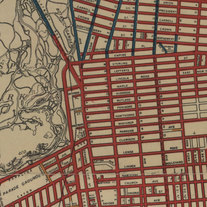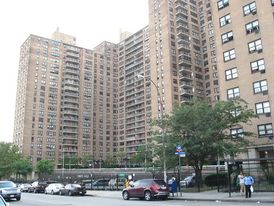Architect Clarence Randall Van Buskirk designed Ebbets Field with an emphasis on aesthetic details like marble tiling and chandeliers, differentiating the Dodgers' ballpark from other stadiums in the country.

Ebbets Field
During the first half of the twentieth century, Brooklyn, New York was the home of the proud Ebbets Field, a major league baseball stadium reminiscent of a modern Roman coliseum. Every baseball season, the Brooklyn Dodgers would suit up and prepare for battle against formidable foes in the pursuit of greatness, and loyal spectators would cheer their dear Dodgers towards victory. Throughout the years, Ebbets Field and the diverse populations that frequented it witnessed incredible triumphs on the baseball diamond, including one of the most important achievements in African American history.
Located in the Flatbush neighborhood of Brooklyn, Ebbets Field was constructed in 1913, costing $750,000 to complete. Its home team was the Brooklyn Robins, renamed the Brooklyn Dodgers in 1932 . Interest in the Dodgers increased exponentially, requiring constant reconstruction of its stadium so that it accommodated fans from diverse backgrounds and ethnicities. In essence, the Brooklyn Dodgers were the archetypal baseball team of a “New America,” representing an ever-expanding population of New Yorkers.
In 1947 the General Manager of the Dodgers, Branch Rickey, placed Jackie Robinson, a black man, on the Dodgers’ roster, making him the first African American to ever break the color barrier in Major League Baseball. Robinson undoubtedly faced incredible levels of racism during the beginning stages of playing for the Dodgers, but in Robinson, Rickey found a player “with the guts not to fight back.” During the years he spent with the Brooklyn Dodgers playing in Ebbets Field, Robinson proved that limitations could be transcended, opening the doors for other African American baseball players to soon join the major leagues years before Brown vs. Board of Education legally outlawed segregation.
The Dodgers were moved to Los Angeles in 1957, leaving an empty, decrepit baseball diamond in the middle of Flatbush that was finally demolished in 1960. To this day, the site of the former Ebbets Field is nothing but rubble, with housing projects built over the remains of the stadium. It is said by some that the state of Ebbets Field today is an “American tragedy,” and one can only wonder if anyone will ever endow the site with a reminder of all the great accomplishments that took place there.
This entry contributed by a Columbia University student enrolled in Art History W3897, African American Art in the 20th and 21st Centuries, taught by Professor Kellie Jones in 2008.




